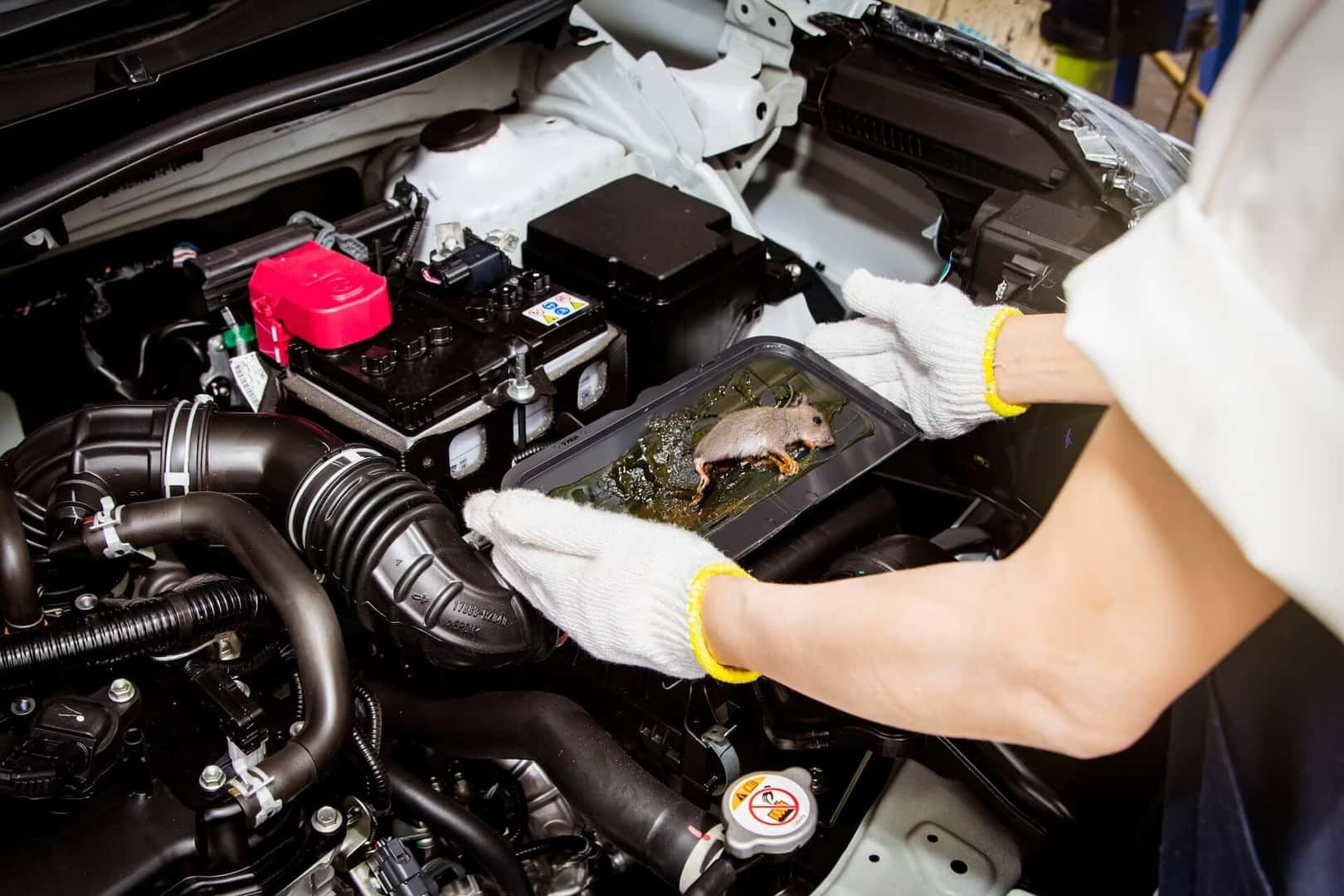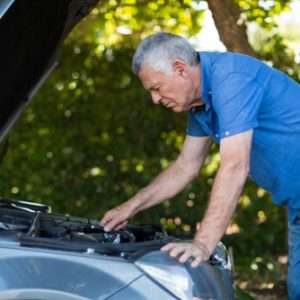Identifying the Problem
So, you suspect you have mice in your car engine? It’s a common problem, unfortunately. Mice are attracted to the warmth and shelter that a car engine provides, especially during colder months. They can cause significant damage by chewing on wires and building nests. This can lead to costly repairs. It is important to act fast.
Why Mice Love Car Engines
Mice seek out warm, enclosed spaces. Car engines offer just that! They are also attracted to the materials used in car wiring and insulation. These materials often contain soy-based products, which mice find appealing. The engine compartment provides protection from predators and the elements. This makes it an ideal nesting site.
Tip: Regularly inspect your engine compartment for signs of mice, such as droppings, nesting materials, or chewed wires. Early detection can prevent major damage.
Steps to Remove Mice
Getting rid of mice requires a multi-pronged approach. Here’s a step-by-step guide:
1. Clean the Engine Compartment
Remove any nesting materials, droppings, and food debris. Use a vacuum cleaner and a mild detergent to clean the area thoroughly. Be careful not to damage any wires or components. A clean engine bay is less attractive to mice.
2. Use Repellents
There are several effective mouse repellents available. Consider using:
- Peppermint oil: Mice dislike the strong scent of peppermint. Soak cotton balls in peppermint oil and place them around the engine compartment.
- Mothballs: The strong odor of mothballs can deter mice. Place them in a mesh bag to prevent them from rolling around.
- Electronic repellents: These devices emit ultrasonic sounds that are unpleasant to mice.
3. Set Traps
If repellents aren’t enough, you may need to set traps. Snap traps and live traps are both effective. Bait the traps with peanut butter or cheese. Place the traps near areas where you’ve seen signs of mice activity. Check the traps regularly.
Important: When handling traps or cleaning up after mice, wear gloves to protect yourself from diseases.
Preventing Future Infestations
Prevention is key to keeping mice away from your car engine. Here are some tips:
- Park your car in a garage if possible.
- Seal any cracks or openings in your garage or carport.
- Remove any food sources from your car and garage.
- Regularly inspect your engine compartment.
- Consider using a car cover to protect your vehicle.
These steps will significantly reduce the likelihood of mice returning.
FAQ: Frequently Asked Questions
Q: How much damage can mice cause?
A: Mice can cause significant damage to your car’s wiring, insulation, and hoses; This can lead to costly repairs, including engine damage and electrical problems. It’s not just a nuisance; it’s a potential safety hazard.
Q: Are there any professional services that can help?
A: Yes, pest control companies can provide professional mouse removal and prevention services. They can also identify and seal entry points to prevent future infestations. If the problem is severe, consider seeking professional help.
Q: What are the signs of mice in my car?
A: Common signs include droppings, nesting materials (shredded paper, fabric), chewed wires, and a musty odor. You may also hear scratching or squeaking noises coming from the engine compartment.
So, you suspect you have mice in your car engine? It’s a common problem, unfortunately. Mice are attracted to the warmth and shelter that a car engine provides, especially during colder months. They can cause significant damage by chewing on wires and building nests. This can lead to costly repairs. It is important to act fast.
Mice seek out warm, enclosed spaces. Car engines offer just that! They are also attracted to the materials used in car wiring and insulation. These materials often contain soy-based products, which mice find appealing. The engine compartment provides protection from predators and the elements. This makes it an ideal nesting site.
Tip: Regularly inspect your engine compartment for signs of mice, such as droppings, nesting materials, or chewed wires. Early detection can prevent major damage.
Getting rid of mice requires a multi-pronged approach. Here’s a step-by-step guide:
Remove any nesting materials, droppings, and food debris. Use a vacuum cleaner and a mild detergent to clean the area thoroughly. Be careful not to damage any wires or components. A clean engine bay is less attractive to mice.
There are several effective mouse repellents available. Consider using:
- Peppermint oil: Mice dislike the strong scent of peppermint. Soak cotton balls in peppermint oil and place them around the engine compartment.
- Mothballs: The strong odor of mothballs can deter mice. Place them in a mesh bag to prevent them from rolling around.
- Electronic repellents: These devices emit ultrasonic sounds that are unpleasant to mice.
If repellents aren’t enough, you may need to set traps. Snap traps and live traps are both effective. Bait the traps with peanut butter or cheese. Place the traps near areas where you’ve seen signs of mice activity. Check the traps regularly.
Important: When handling traps or cleaning up after mice, wear gloves to protect yourself from diseases.
Prevention is key to keeping mice away from your car engine. Here are some tips:
- Park your car in a garage if possible.
- Seal any cracks or openings in your garage or carport.
- Remove any food sources from your car and garage.
- Regularly inspect your engine compartment.
- Consider using a car cover to protect your vehicle.
These steps will significantly reduce the likelihood of mice returning.
A: Mice can cause significant damage to your car’s wiring, insulation, and hoses. This can lead to costly repairs, including engine damage and electrical problems. It’s not just a nuisance; it’s a potential safety hazard.
A: Yes, pest control companies can provide professional mouse removal and prevention services. They can also identify and seal entry points to prevent future infestations. If the problem is severe, consider seeking professional help.
A: Common signs include droppings, nesting materials (shredded paper, fabric), chewed wires, and a musty odor. You may also hear scratching or squeaking noises coming from the engine compartment.
Understanding the Long-Term Implications
Ignoring a mouse infestation in your car engine can have serious long-term consequences. Beyond the immediate damage to wiring and components, the presence of mice can lead to recurring problems. Their scent trails can attract other mice, creating a persistent infestation. Furthermore, the damage they cause can compromise the safety and reliability of your vehicle. A seemingly minor issue can escalate into a major mechanical failure, potentially leaving you stranded or, worse, causing an accident.
The Ripple Effect of Neglect
Consider the scenario where mice chew through a critical sensor wire. This could lead to inaccurate readings, causing the engine to run inefficiently or even stall. Over time, this inefficiency can damage other engine components, leading to a cascade of problems. Similarly, damaged insulation can expose wires, increasing the risk of short circuits and electrical fires. The cost of repairing these issues can quickly outweigh the initial investment in preventative measures.
Did you know? Some insurance policies may cover damage caused by rodents, but it’s crucial to check your specific policy details. Documenting the damage with photos and obtaining a professional assessment can be helpful when filing a claim.
Choosing the Right Repellent: A Deeper Dive
While peppermint oil and mothballs are common recommendations, it’s important to understand their limitations and potential drawbacks. Peppermint oil, while effective initially, can dissipate quickly, requiring frequent reapplication. Mothballs contain naphthalene or paradichlorobenzene, which are toxic chemicals. Their use should be approached with caution, especially if you have children or pets. Consider the environmental impact as well.
Exploring Alternative Repellents
Several alternative repellents offer a more sustainable and less hazardous approach. These include:
- Cedarwood oil: Similar to peppermint oil, cedarwood oil has a strong scent that mice find unpleasant.
- Dryer sheets: Some people swear by the effectiveness of dryer sheets, although the scientific evidence is limited. The strong scent may deter mice.
- Commercial rodent repellents: These products are specifically formulated to repel rodents and often contain a blend of natural ingredients. Choose a product that is safe for use around vehicles and the environment.
Remember to rotate your repellents periodically to prevent mice from becoming accustomed to the scent.
Addressing Existing Damage: A Step-by-Step Approach
If you’ve already discovered damage caused by mice, it’s crucial to address it promptly and effectively. This may involve:
1. Assessing the Extent of the Damage
Carefully inspect all wires, hoses, and components in the engine compartment. Look for signs of chewing, fraying, or exposed wires. Use a flashlight to illuminate hard-to-reach areas. Document the damage with photos.
2. Repairing or Replacing Damaged Components
Minor damage, such as a slightly chewed wire, may be repairable with electrical tape or wire connectors. However, more significant damage may require replacing the entire wire harness or component. If you’re not comfortable performing these repairs yourself, consult a qualified mechanic.
3. Cleaning and Disinfecting the Affected Areas
Thoroughly clean and disinfect any areas that have been contaminated by mouse droppings or urine. Use a disinfectant cleaner to kill bacteria and viruses. Wear gloves and a mask to protect yourself from exposure.
4. Preventing Future Damage
Once the damage has been repaired, take steps to prevent future infestations. This includes using repellents, sealing entry points, and regularly inspecting your engine compartment.





